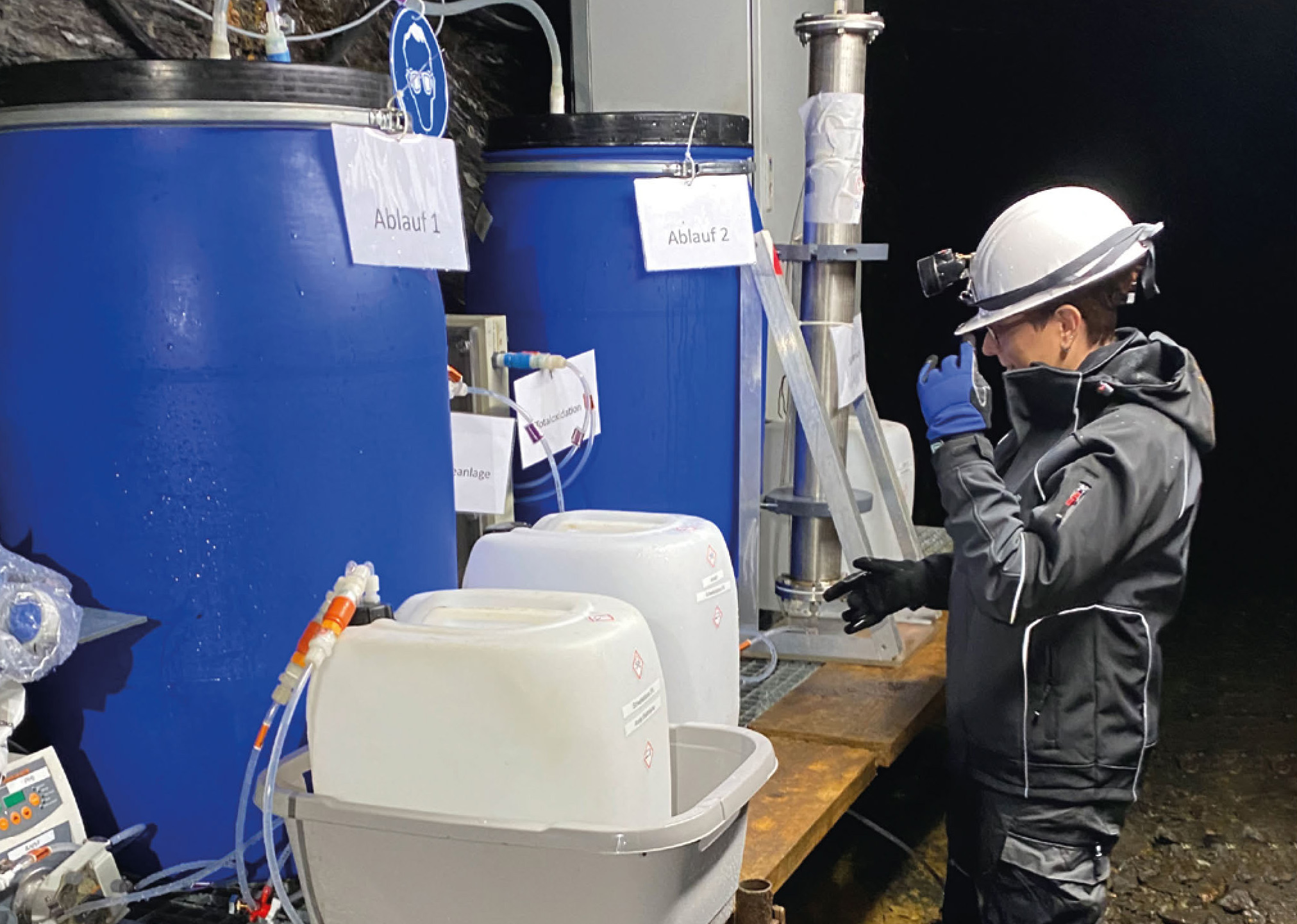
Underground testing facility for arsenic and fluoride removal from mine water
Current research

Saxony has for centuries been one of the most important ore mining regions in Europe. Global technological trends as well as geopolitical factors have caused a renewed interest in locally sourced raw materials. However, mining now also has a major acceptance problem. Even before the mostly visible impacts on landscapes, the effects on the water balance are what will affect the costs of aftercare for a long time. They are thus also known as the “perpetual burden” of mining. As, Ni, Cd, Zn, Mn, Fe, but also F, SO4 and occasionally U, Cl and organic substances are pollutants frequently found in mine water.
In the WIR! - recomine joint project TERZINN, we have, together with partners from science and industry, set ourselves the goal of demonstrating at the model site of the Ehrenfriedersdorf tin ore mine that it is possible to control such effects at reasonable cost by means of a “toolbox” of state-of-the-art mine water treatment processes. More than one ton of arsenic, approx. 50 tons of fluoride and other pollutants are emitted from the mine every year. More than 4 % of the arsenic load of the Elbe river can be attributed to this mine. However, with an annual discharge volume of around three million m3 per year, the mine water itself also represents a regionally significant water resource that is increasingly coming into focus in view of supply shortages.
The joint project aims to develop both “low cost” processes for arsenic removal, as well as processes for further purification of the water. The team at Fraunhofer IKTS is focusing on the latter and primarily uses electrochemical membrane processes for this purpose. These can be used to remove not only arsenic but also, in contrast to the other processes, further pollutants such as fluoride, manganese, sulphate and others that prevent the mine water from being used for higher-grade purposes, such as drinking water. Another focus is on further treatment as feed water for hydrogen production using electrolysis. This requires large quantities of very pure water, which must not contain any arsenic or fluoride.
Our investigations to date have shown that electrochemical processes are very suitable for the separation of arsenic and other pollutants under conventional laboratory conditions (Figure 1).
However, there are considerable differences between laboratory testing and practical application. For example, the mine water has a consistent temperature of only 7 °C and it is necessary to adapt the processes accordingly. For this reason, an underground technical center was set up in the Tiefe Sauberger Stollen tunnel at 100 metres depth and put into operation in July 2023 (Figure 2). Initial experience shows that the energy requirement for the same cleaning performance is around 20 percent higher than in the laboratory and that the maintenance cycles are somewhat shorter.
With the underground technical center, IKTS now has another unique research infrastructure. A follow-up pilot project has already been approved.
Supported by


